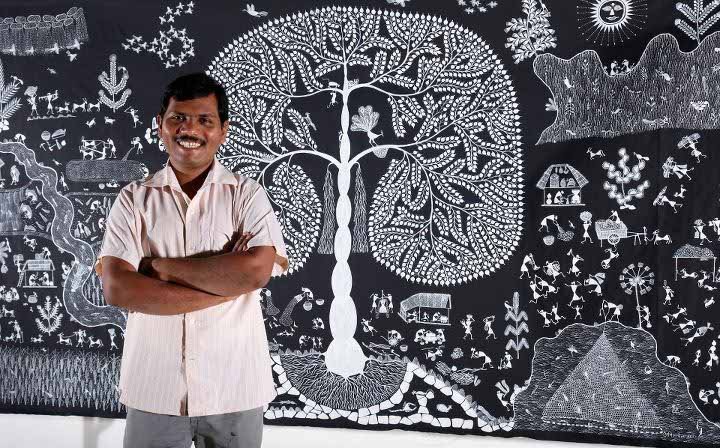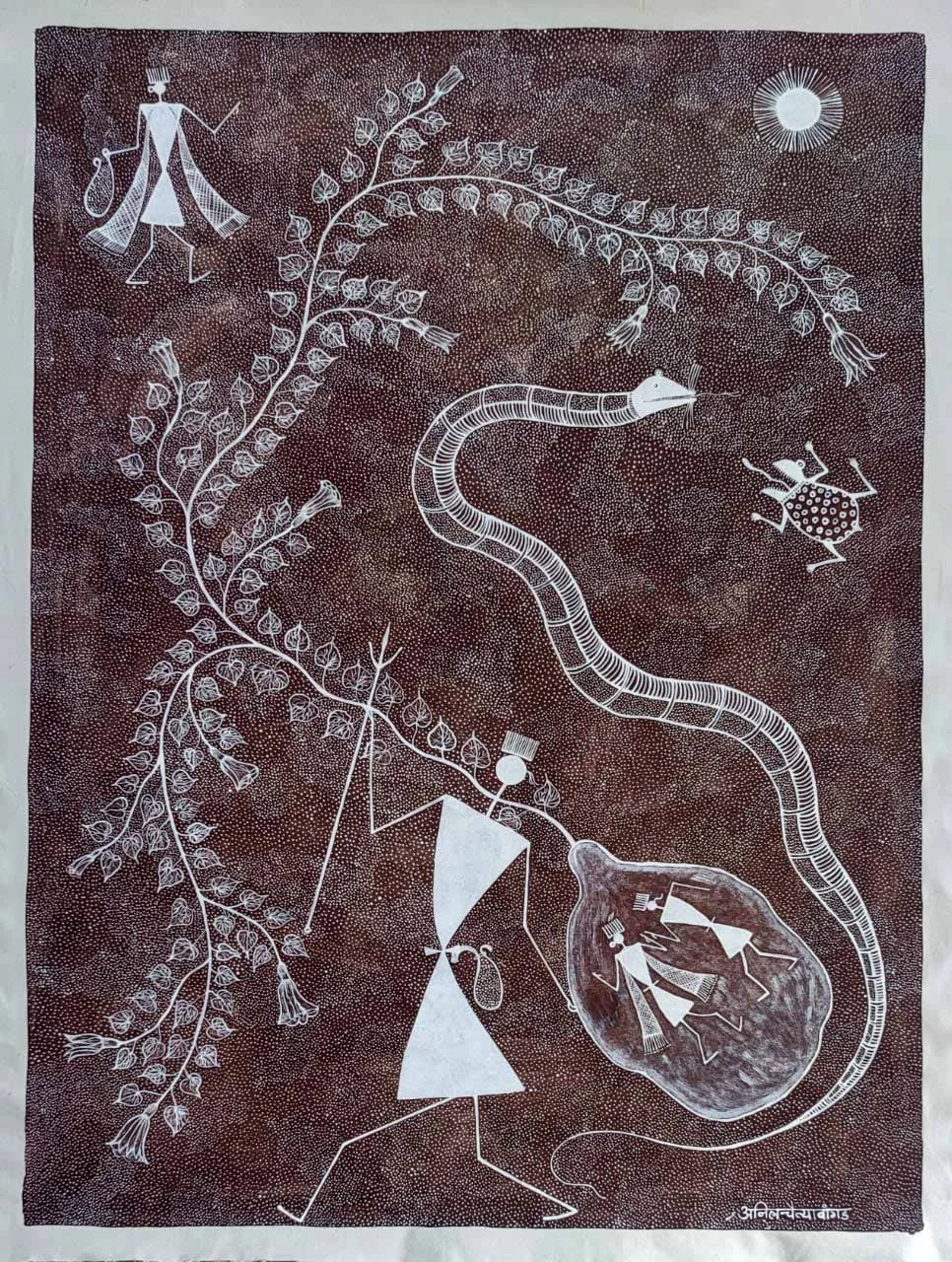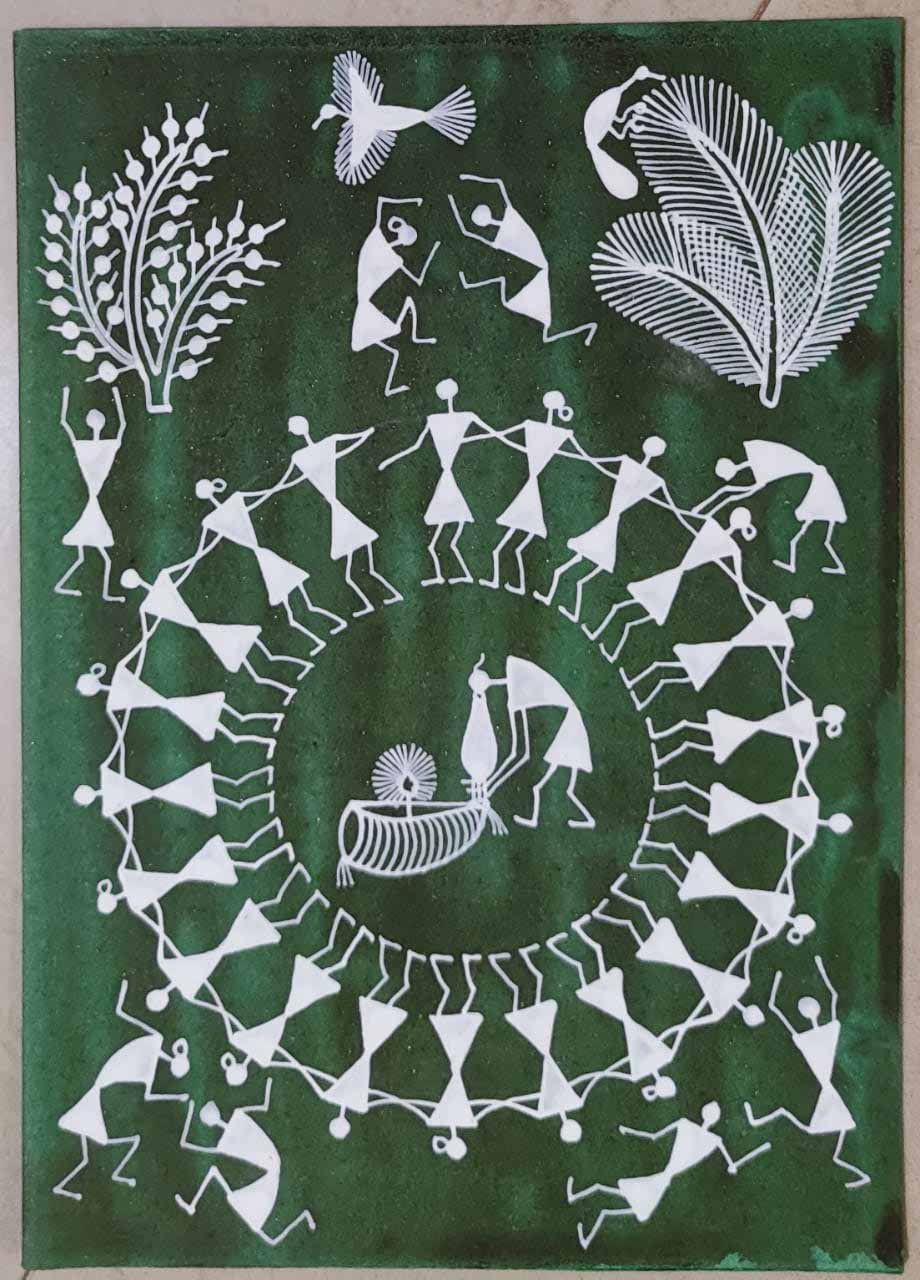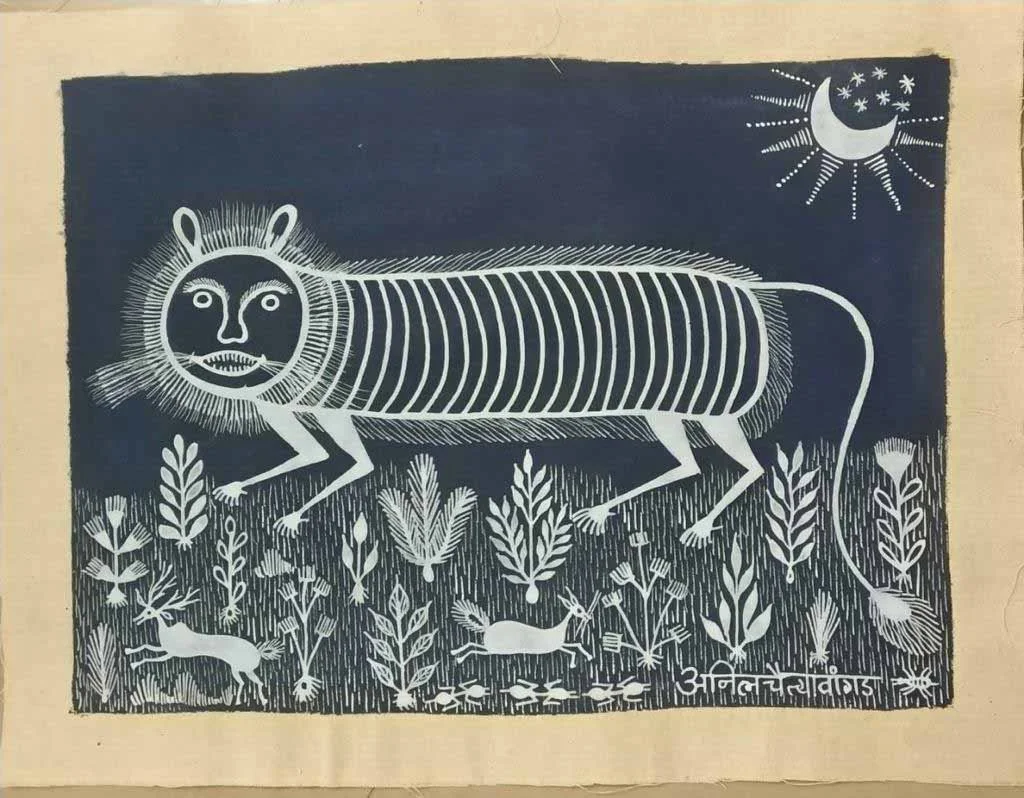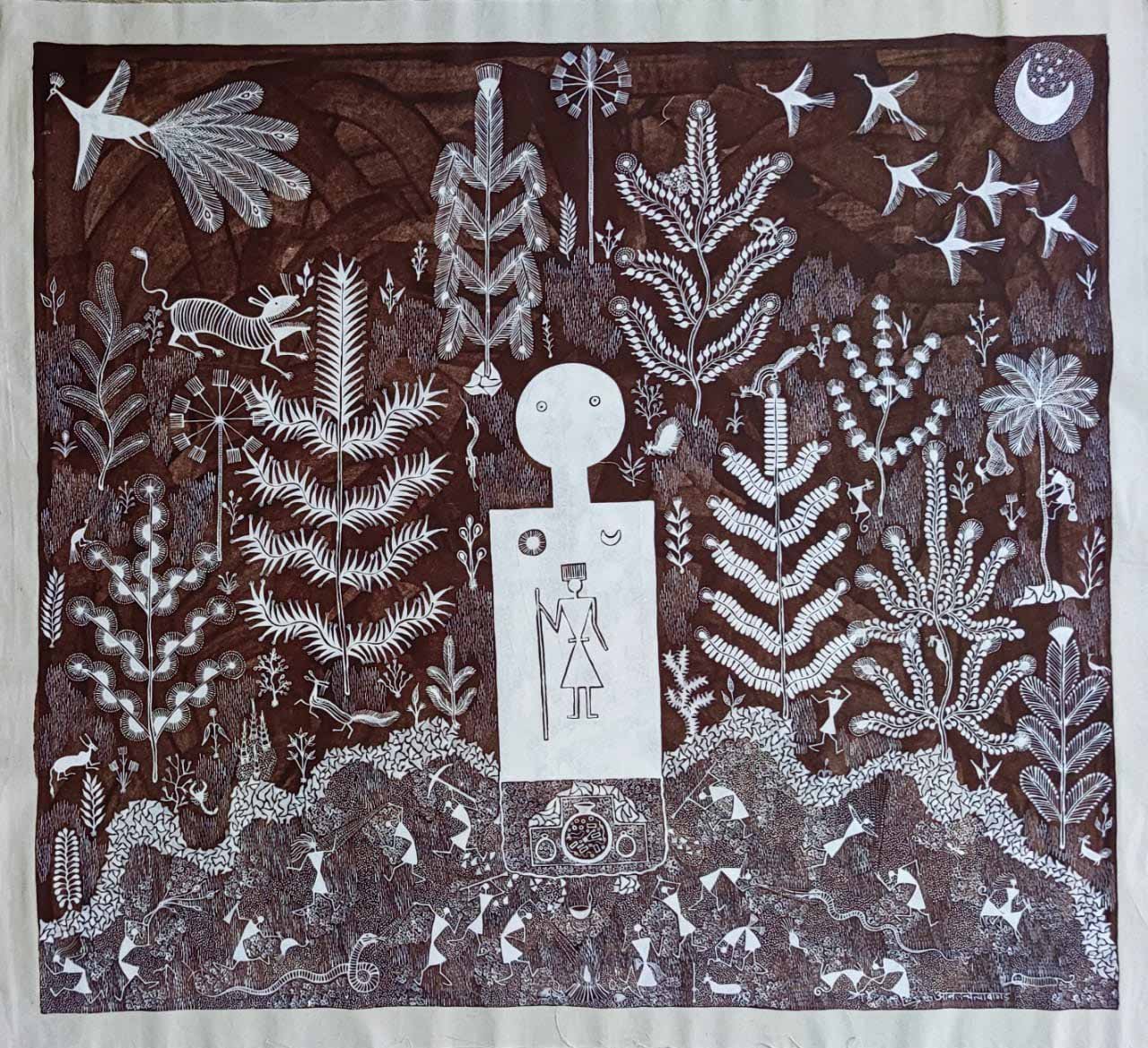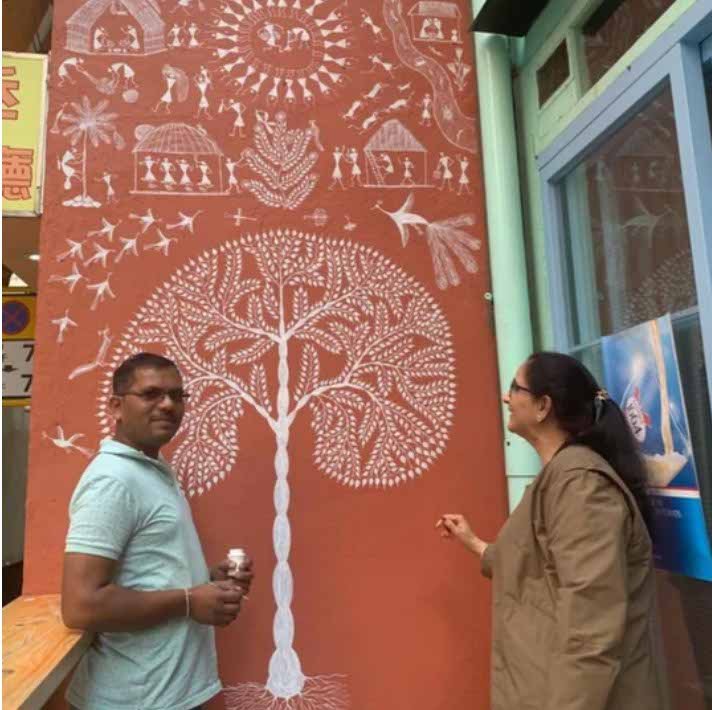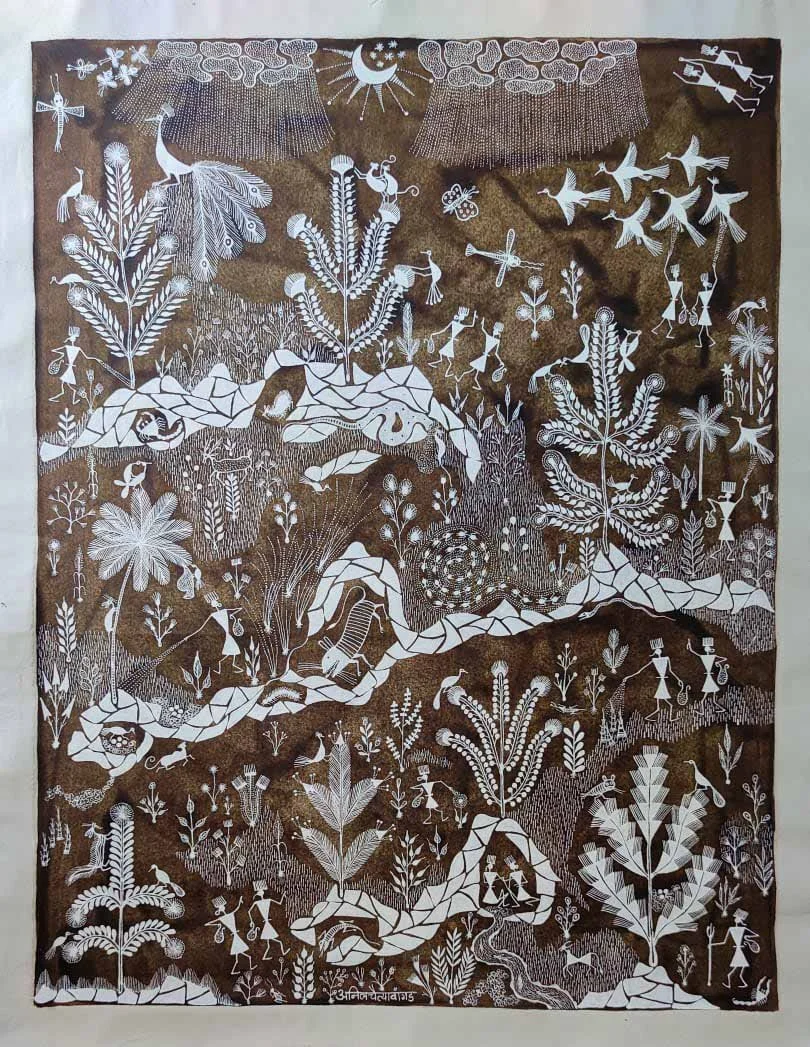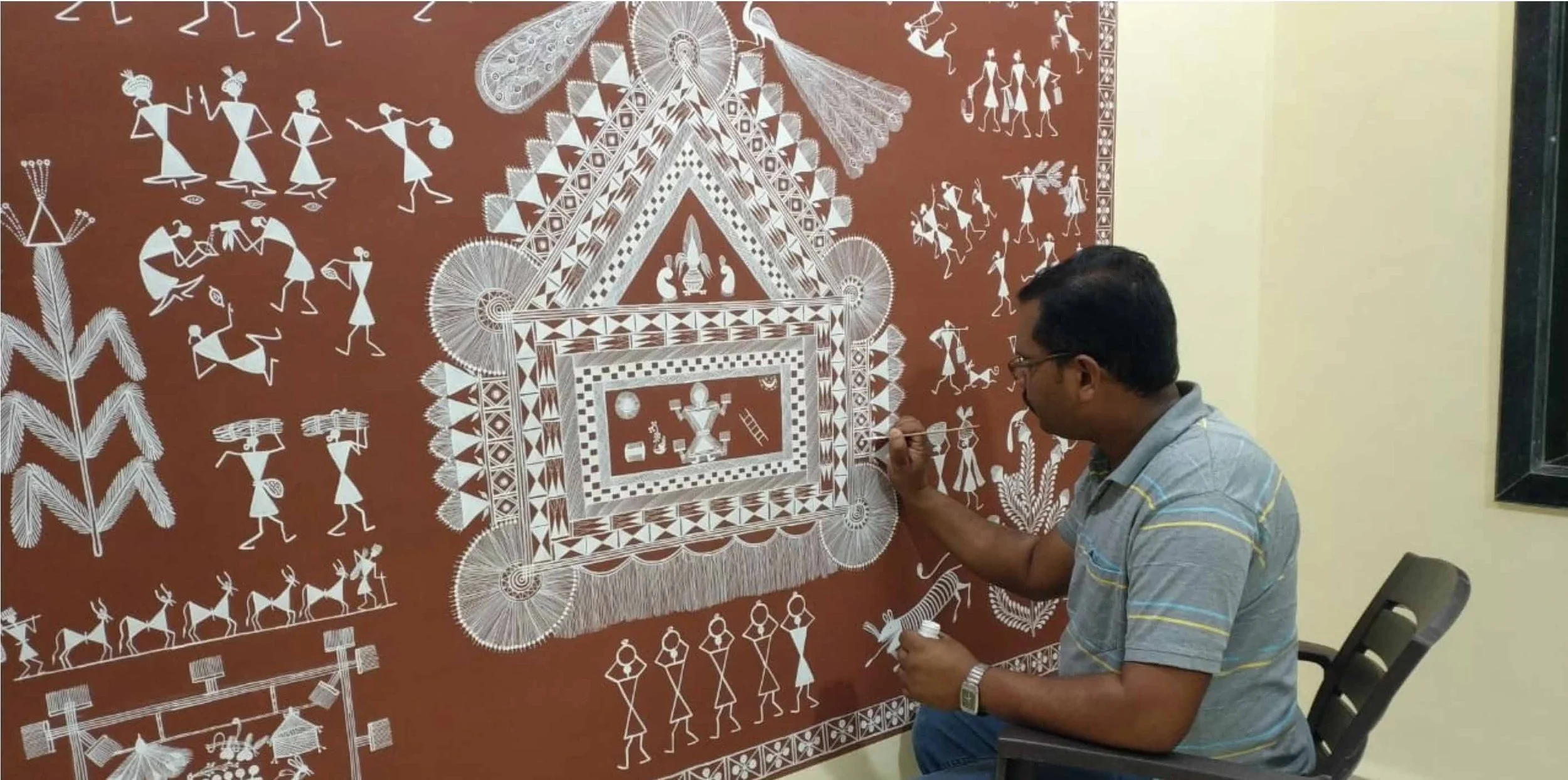Anil Vangad
Warli Painting Share Messages of Harmony and Equilibrium
Anil Vangad is a Warli painter living in Mumbai, India. The Warli painting tradition spans over 1,200 years, initially done on the walls of huts. Its unique style is characterized by the use of earthen tones and circles, triangles, and squares. These geometric shapes make up human and animal bodies alike, each of which tells a unique story as all the folktales, history, and legends of the Warli are exclusively passed down through this art form.
Traditionally Warli paintings were created by the 'subhasani' (married) women of the tribe, utilizing a rice-flour mix that would render a white paste to contrast red mud or cow dung walls. The stick-figure art form of the Warlis was started by women, who would create a painting on the walls of huts for weddings to ensure good fortune for the newlyweds. In 1970, male artists adapted the art and started painting, transferring it to paper and canvas to supplement their income from farming. Today, Vangad uses a thin bamboo brush, white acrylic paint, red mud (gerue), and cotton cloth to create modern Warli paintings. He shares that in traditional fashion, it was his mother who taught him how to paint and explained the stories behind the art, “When I was in the 5th grade, I would go with my mother to attend many marriages to help her with these wall murals. I remember, she could not articulate aloud what she wanted to show in her paintings but her imagination and creativity were evident in her work.”
Perhaps the most prominent theme in Warli pieces is the clear equilibrium needed between humans and nature, “The Warli believe that everything in this world must exist in harmony: the actions of humans and the space they occupy.” These elegant scenes remind us of the importance of community life and the impact of our interactions.


